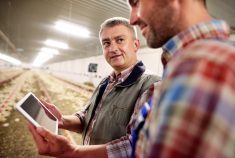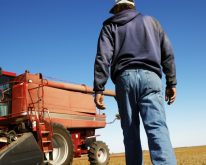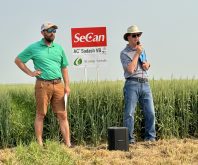If you have never considered doing year-end tax planning, challenge yourself to answer the following questions:
Do you know the current profitability of your farm operation?
Do you know your planned revenue and expense transactions from now until the end of your fiscal year?
Do you know your anticipated farm profitability at year-end based on the answers to the first two questions?
Do you know your anticipated tax liability?
Do you have a tax plan for minimizing your overall tax bill both now and in the future?
Read Also

Riding the tariff rollercoaster
Farmers are accustomed to roller-coaster years. But the current geopolitical windstorm is something else entirely. On his cattle operation near…
If you couldn’t answer “Yes” to all of the above, you could be missing out on opportunities to save tax dollars. And what savvy business owner doesn’t want to keep as much as possible of their hard-earned money rather than give it to the taxman?
Fall is an excellent time to sit down with your tax advisor for a year-end tax planning session. Knowing your 2009 and future taxable positions early on will give you peace of mind. It will also help you determine your cash flow needs and give you time to apply various tax strategies to adjust your taxable position for current and/or future years. The goal of this exercise is to save you as much money as possible in both the short-and long-term.
The two basic strategies for year-end tax planning are to:
Defer income and capital gains until next year, and
Bring anticipated tax-deductible expenses and capital losses into this tax year.
The opposite strategies may apply to someone in a loss or non-taxable position. These are to:
Accelerate income and capital gains into this tax year, and
Defer tax-deductible expenses and capital losses until next year.
Consider some of these ways you might minimize this year’s taxes:
If you plan to sell machinery or equipment, think about delaying until your next fiscal year. Then, you can claim another year of capital cost allowance (CCA).
If you must buy depreciable assets, do so before your fiscal year-end to increase your CCA claim by half of the annual rate in the year the item is acquired. [Note: Computer equipment and system software acquired after January 27, 2009 and before February 2011 is eligible for a temporary 100 per cent CCA rate, which results in eligible costs being fully deductible.]
If you resorted to selling off eligible breeding livestock this year to avoid financial losses due to either drought or excess moisture, you may be eligible for a one-year tax deferral on 2009 income from those sales to help replenish breeding stock in the following year. Producers who reduced their breeding herds by at least 15 per cent are eligible, and 30 per cent of income from net sales can be deferred if the herd has been reduced by at least 15 per cent, but less than 30 per cent. Where the herd has been reduced by 30 or more per cent, 90 per cent of income from net sales can be deferred.
To qualify, you must be located in one of the western Canadian areas of drought or excess moisture designated for support to date by the federal government. Check out the Agriculture and Agri-Food Canada website at to see the list of eligible areas.
If you are a farm producer who uses the cash method for reporting income, some additional steps you can take to reduce your net farm income before year-end include:
Prepayments for cash inventory supplies or other farm inputs. These inputs include items such as feed, fertilizer, chemicals, seed, and so on. You can do this if you buy the goods under a verbal or written agreement. As well, the quantity and nature of the goods must meet normal requirements, the supplier must be capable of delivering the goods, and the goods must, in fact, be delivered and used in the normal course of the farm operation.














